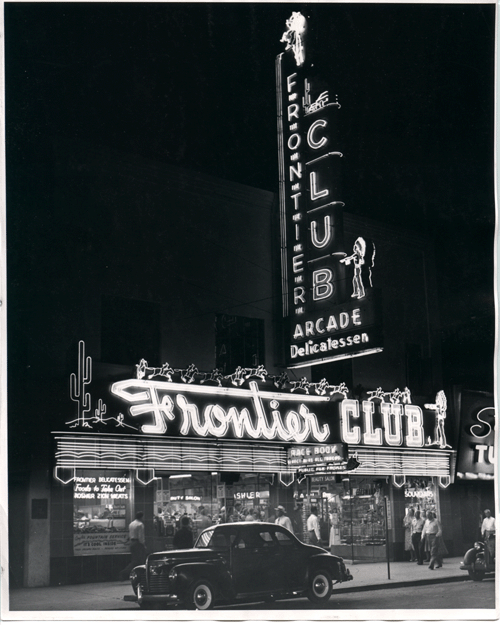Fourth and Fremont
When I was a kid, there was no better place on Fremont Street than Coronets Five, Dime and 25 cent Store. Trader Bill's was a very close second because of that wonderful smell of leather, but Coronets had toys and games for kids. It may have even had a soda fountain but don't quote me on that until I do some more research.
Coronets stood on the corner of Fourth and Fremont and had a roof top neon sign that was a thing of beauty. Roof top signs were popular on Fremont. The El Portal Theater's only signage for awhile was its roof top sign. The El Cortez had a roof top sign, the Pioneer Club had one (still there but endangered) and the one across the street on the old Las Vegas Pharmacy pointing towards the Pioneer Club.
Next to Coronets was Jerry's Snack Bar which became a Jewelry Store. Next door to that was Orange Julius. Orange Julius drinks were heaven on earth on a hot summer day.
Next to Orange Julius was the Carl Ray Professional Building. This building was built around 1920 with a turquoise front and gold fleck lettering on a sign above the door. Each office upstairs had gold fleck lettering on the windows so that the doctors, dentists and attorneys could advertise their offices.
Next to the Carl Ray Building was Chic Hecht's Store for Women. We didn't have big department stores and certainly no malls until Irwin Molasky built the Boulevard Mall in the mid-1960s, so women who wanted fashionable clothes shopped downtown. My mother bought her second wedding dress at Chic Hecht's.
Next door to Chic Hecht's was Mr. B's. We are still researching Mr. B's. Next door to Mr. B's was Berta's Specialities. This was one of those stores in the 1960s that sold busts of Beethoven and what passed for cultured items to display in your home.
On the corner of Fifth (Las Vegas Blvd) and Fremont was a Chevron Service Station. We had a lot of gas stations in the downtown area and as you will see in the upcoming pages, many of them were on Fremont Street or one of the near by feeder streets.
Before the days of the highway interstate and freeways, Las Vegas Blvd was the main road to travel to Los Angeles or to Salt Lake City, and as luck would have it, it intersected with Fremont Street. Having that main thoroughfare helped turn Fremont Street into Glitter Gulch with all its neon and flicker bulb signage.
Today, where Coronets once stood is today a Walgreens and the Neonopolis Parking Garage.
Where Mr. B's was first a bar called Race Rock and is now the tiki bar, Mickey Finzz.
Where Berta's Specialities and the Chevron Station once stood is now Hennessy's Tavern.









